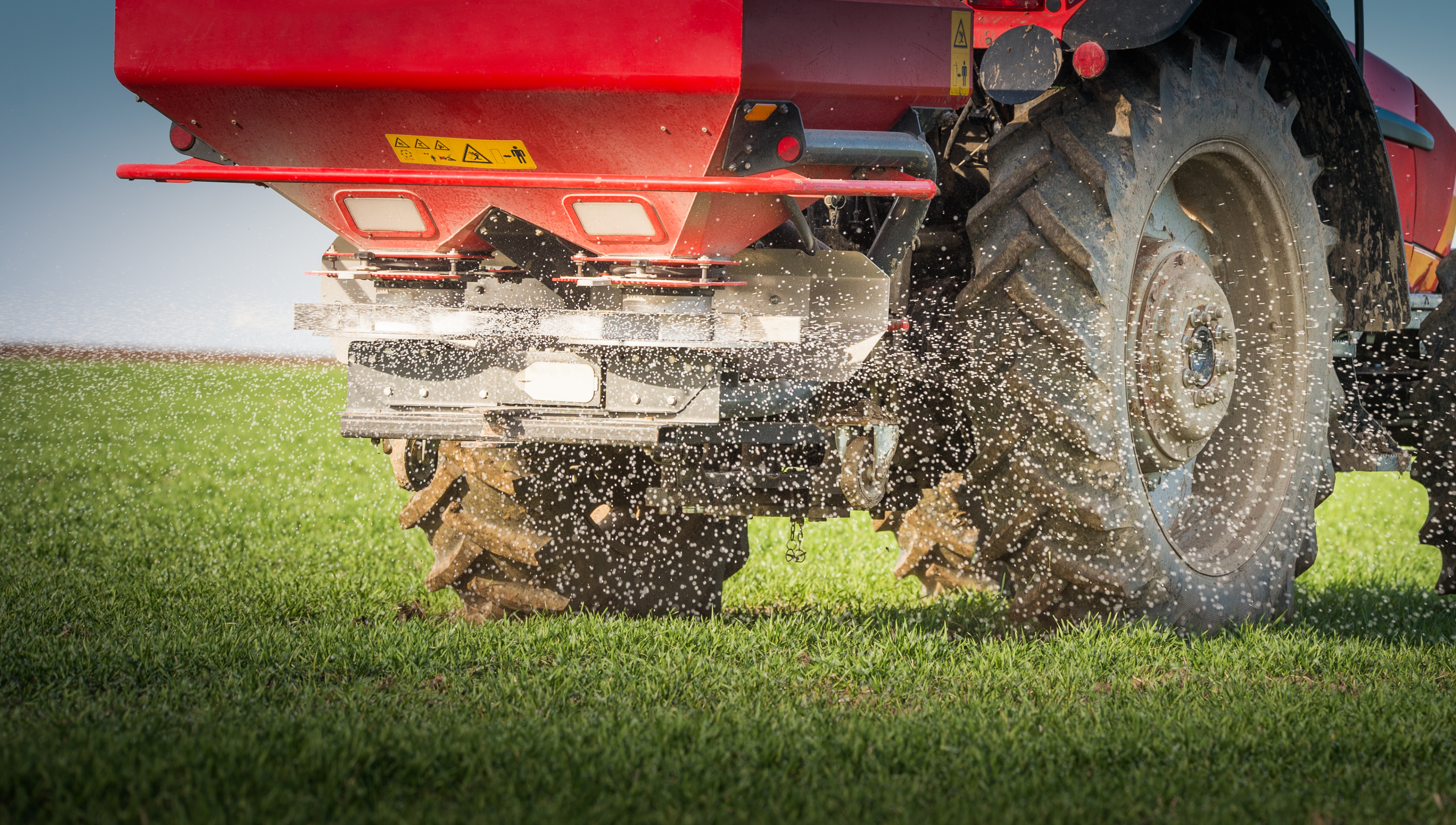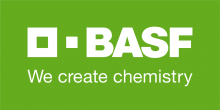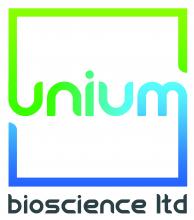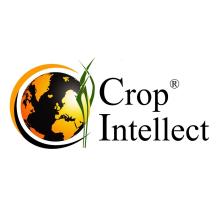An ever increasing number of products are available commercially claiming to improve fertiliser efficiency, which are beginning to be classed as 'Enhanced Efficiency Fertilisers'. Some of these products are well proven over decades, others are suppored by less evidence or are only likely to be effective in certain situations.
Given the range in products and sometimes confusing marketing claims it is important to be clear about the mechanism of any given product and where it is most likely to work. Nitrification Inhibitors are well proven to slow nitrification of ammonium to nitrate and can substantially reduce nitrous oxide (N2O) emissions, but their agronomic value is likely to be limited in many situations. The urease inhibitor nBTPT slows the conversion of urea to ammonia, and is well proven to reduce volatilisation of ammonia from urea applications, substantially increasing the agronomic efficiency of urea (Sylvester-Bradley et al., 2012), but it will have no impact on ammonium nitrate fertilisers.
In recent years fertilisers have been developed with slow release and controlled release properties, often utilising specialised coatings. Other products use microbes to make nutrients more available, or fix nitrogen from the air directly. A range of carbohydrate source products claim to improve nutrient uptake by helping to feed soil microbes with a similar mechanism to root exudates, with bacteria or fungi making the nutrients more available and helping to transport into the plant root. A range of biostimulant products claim to impact plant signalling, increasing nutrient uptake. This includes foliar applications of N forms which supposedly are much more efficiently taken up and can replace large quantities of conventionally applied N.
Products are listed under types of EEF below. Feel free to join the page to add any more, or to correct any mistakes. Share your experience of novel fertiliser products here, and connect products, companies, resources and projects that you know of.
Nitrification Inhibitors
A number of chemicals that are proven to slow down the conversion of ammonium to nitrate by the soil bacteria Nitrosomonas, reducing N2O emissions. Can reduce leaching of nitrate following application of fertiliser N as N is kept in the ammonium form for longer. Claims made of enabling single large application of N at the start of the season that slowly becomes available, rather than multiple smaller applications.
Active Ingredients, example products and manufacturers
- Nitrapyrin: 2-chloro-6-(trichloromethyl)-pyridine: N-Lock® - Corteva
- DCD: Dicyandiamide: Didin - Omex
- DMPP: 3,4-dimethylpyrazole phosphate: ENTEC® Vizura®/Vibelsol® - BASF
- MPA: N 3(5-methyl-1H-pyrazol-1-yl) methyl acetamide - SKW Stickstoffwerke Piesteritz GmbH
Urease Inhibitors
Chemicals that are proven to slow down the conversion of urea to ammonium, by inhibiting the urease enzyme. The normal application of urea often results in large emissions of ammonia volatised and lost as a gas. Losses can be greater than 40% of N and have been found to average 20% in UK arable and grassland (Chambers & Dampney, 2009). By slowing hydrolysis of urea the conditions for volatilisation of ammonia are reduced and losses can be reduced to below 5%, improving the agronomic efficiency of urea and UAN fertilisers to close to ammonium nitrate. Urease inhibitors will not have a meaningful impact for non-urea based fertilisers.
- nBTPT: originally marketed as Agrotain®: SUSTAIN® – Origin
- YaraVera Amiplus® - Yara
- 2-NPT: Piagran Pro® - SKW Piesteritz
- nBTPT & 2-NPT: Limus® - BASF
- Ammonium thiosulphate (less well proven than other Urease Inhibitors?)
- Sulfammo N process - calcium coating from Timac Agro
Combined Urease & Nitrification Inhibitors
- MPA & 2-NPT - ALZON-neo-N® - ADM (Nitrogen Stabilised) - developed by SKW Stickstoffwerke Piesteritz.
- DCD & Ammonium thiosulphate - Didin® - Omex
- Nutrisphere-NL® (Verdesian); Origin Enhanced-N - Origin; Liqui-safe - Agrii - Maleic-Itaconic polymer (MIP) breaks down to organic acids that are claimed to inhibit both urease and bacterial nitrification activity. However, the mechanism and efficacy for this is not as well proven as for NBTPT or conventional NIs.
Slow or controlled release
Fertilisers with coatings or embedded polymers that provide a physical or chemical barrier to the release of the nutrient to the soil.
- Maleic-itaconic copolymer -
- Nutrisphere-N® (Verdesian) Maleic-Itaconic polymer coating on urea or liquid added to UAN
- Avail® (Verdesian) - coating on granular phosphate fertilisers or mixed into liquid fertiliser. Claim to reduce phospate fixation in soil by interacting with antagonistic cations in the soil
- ICL eqo.x® biodegradable polymer coating giving controlled release of nutrients
- Environmentally Smart Nitrogen (ESN®) from Nutrien - polymer membrane around urea granule controlling release over 50-80 days.
- Polymer Sulphur Coated Urea (PCSU) - eg from Indigrow.
Biologicals
The importance of the soil microbiome to making nutrients available to crops is increasingly being understood. Various approaches and products are advocated to balance the ratios of bacteria, funghi and protozoa, introduce or promote beneficial microbes, encourage arbuscular mycorrhizal fungi (AMF) or provide beneficial organic substances like humic acid. Biofertilizers containing living microbes to promote nutrient uptake and plant growth. For example rhizobium innoculants for legume crops or innoculations of free living nitrogen fixing bacteria.
Nitrogen fixing bacteria
A range of microbial solutions are now marketed with the claim of delivering substantial quantities of N fixation from endophytic bacteria living within the plant, different to rhizobium that colonise the root nodules of legumes.
- Gluconacetobacter diazotrophicus - commercialised by Azotic technologies as Encera®
- bacteria forms a symbiotic relationship with the host plant, through all tissues including leaves & roots
- Envita® from Syngenta
- Methylobacterium symbioticum - Utrisha N® and BlueN® from Corteva.
- foliar application allows the bacteria to enter the plant through stomata and fix nitrogen
- Diazotroph microbes supplied by TwinN as a microbial innoculant to colonise the rhizosphere around plant roots and into the plant as endophytes.
- claimed benefits for uptake of other nutrients and plant growth promotion from signalling
- Pivot Bio microbes - Kosakonia sacchari & Klebsiella variicola marketed as Pivot Bio PROVEN® and Pivot Bio RETURN®
- Development of naturally occuring root associated diazotroph bacteria for maize.
- very successful commercialisation in US since 2018
- Bio-N from SFS - consortium of N-fixing bacteria in a biological activator.
- Seed treatment Tiros from Unium now marketed as Nuello®-iN from Syngenta
Other Microbial innoculations
- Plant Works provides formulations of mycorrhizal fungi and plant growth promoting rhizobacteria marketed as Smart Rotations
- Biolevel microbial consortia are claimed to enable reductions in fertiliser use from fixing nitrogen and making soil nutrients more available
- IndigoAg - biotrinsic® M33 FP + M34 FP - seed treatment with claims to increase NUE & WUE in corn, through helping transformation of urea to ammonium.
- Accomplish LM - Nutrien
- LoamBio
Carbon Sources
Supplying carbohydrate sources to support soil microbes at a similar rate to root exudates is being advocated, especially in the Regenerative Agriculture movement and especially with foliar application of nitrogen. It is claimed that adding carbon (eg molasses) can stmulate microbes and increase recovery from soil, as well as reducing scorch from application of UAN.
- Humic and Fulvic acids
- Nurture-N - Aiva Fertiliser
- Molasses - little evidence improves nutrient uptake?
- L-CBF Boost LCBF - Terrafed - QLF Agronomy - Claim to boost soil microbiome.
- Neovita 43 - ADM - product designed to mimic root exudates. Launched commercially in US for maize
- Source from Sound Agriculture - Maltol Lactone - claims to activate soil microbes.
Biostimulants
- SugaROx - formulation based on trehalose-6-phosphate (T6P) a natural plant sugar-based molecule that acts as a signalling compound, increasing sink strength and hence nutrient uptake.
- Seaweed extracts
- Extract from Brown seaweed Ascophyllum nodosum PSI® 362 from Brandon Bioscience (Target Fertilisers) has been shown to increase nitrate assimilation and uptake through uprated root nitrate transporters, nitrate reductase and glutamate synthase activities (Goni et al., 2021).
- Root signalling - eg Valagro Actiwave contains betaine, alginic acid, and caidrine and claims to stimulate proton gates in root cells, accellerating exchange of anions and cations into the root from the rhizosphere.
- Nutrino-Pro from Intracrop contains Pidolic acid and R100 (DPU & Gamma-PGA) with claims to increase nitrogen assimilation and boost cytokinin levels through signalling.
Photocatalysis
- R-Leaf from Crop Intellect - Claim that foliar solution of Titanium dioxide on leaves in presence of sunlight can catalyse the conversion of nitric oxide and nitrous oxide to nitrate that can be directly taken up by the leaf.
Foliar products
A range of claims are made of higher efficiency from foliar applications of fertiliser, with some suggesting radical reductions in rates are possible. In particular the use of urea polymer foliar N applications has been increasingly advocated in recent years. Also amino acid and peptide formulations of N are claimed to give efficiency benefits.
- Efficie-N-t 28® Agrovital - foliar applied urea polymer which becomes available over 6-8 weeks, providing N in amide (NH2) form which form protein more efficiently than taking up nitrate.
- Poly-N Plus - BFS
- Krypton - Agrovista
- Nutrino-Pro - Intracrop - variable length urea polymers claimed to be slowly available over 6-8 weeks
- NHK-Delta - Bionature - stabilised amine nitrogen with potassium, claim to stimulate root development.
- Amino-A BLAAZT
- Bridgeway - Interagro - vegetable amino acids (L-Proline, L-Serine) with claimed reduction in abiotic stress
- Not an EEF, but foliar urea applied in low volumes is being advocated as having higher efficiency of uptake when applied to growing crop - eg Nufol.
Nano-fertilisers
Claims that formulations of nutrients with nano technologies, or naturally occurring 'nano' molecules can increase plant availability and efficiency. Radical claims have been made in India about the effiiciency of nano-urea, which have been scrutinised with a good deal of scepticism - see Frank & Husted 2023















Discussion
Useful paper on EEFs -
Dimka, C., Fugice, J., Singh, U., Lewis, T. 2020. Development of fertilizers for enhanced nitrogen use efficiency – Trends and perspectives. Science of the Total Environment. 731
https://www.sciencedirect.com/science/article/pii/S0048969720326309
Useful Nature Food Paper below:
Lam, S.K., Wille, U., Hu, HW. et al. Next-generation enhanced-efficiency fertilizers for sustained food security. Nature Food 3, 575–580 (2022). https://doi.org/10.1038/s43016-022-00542-7
Abstract:
Nitrogen losses in agricultural systems can be reduced through enhanced-efficiency fertilizers (EEFs), which control the physicochemical release from fertilizers and biological nitrogen transformations in soils. The adoption of EEFs by farmers requires evidence of consistent performance across soils, crops and climates, paired with information on the economic advantages. Here we show that the benefits of EEFs due to avoided social costs of nitrogen pollution considerably outweigh their costs—and must be incorporated in fertilizer policies. We outline new approaches to the design of EEFs using enzyme inhibitors with modifiable chemical structures and engineered, biodegradable coatings that respond to plant rhizosphere signalling molecules.